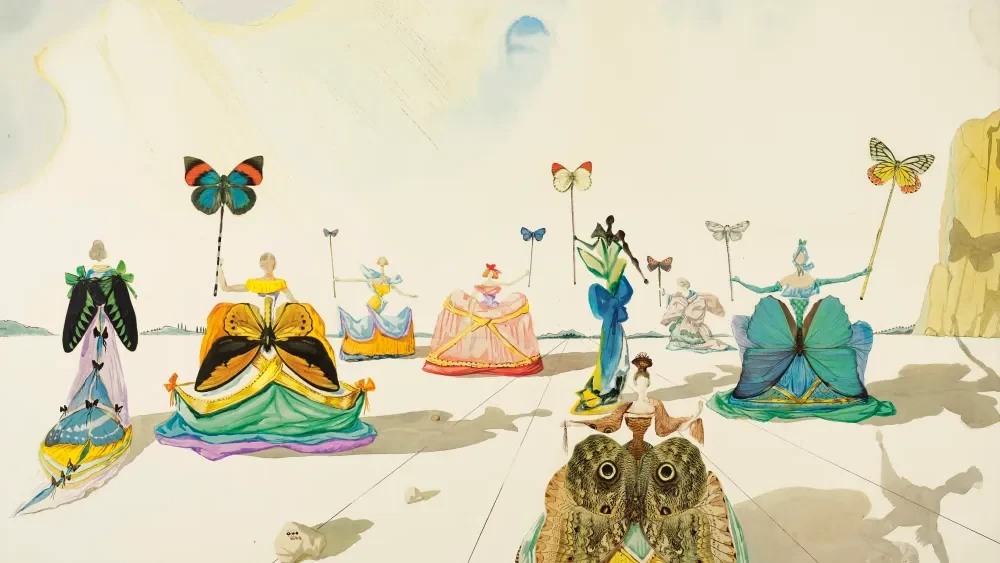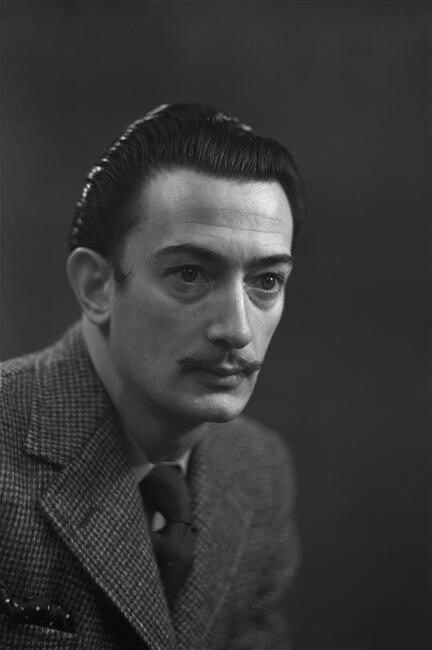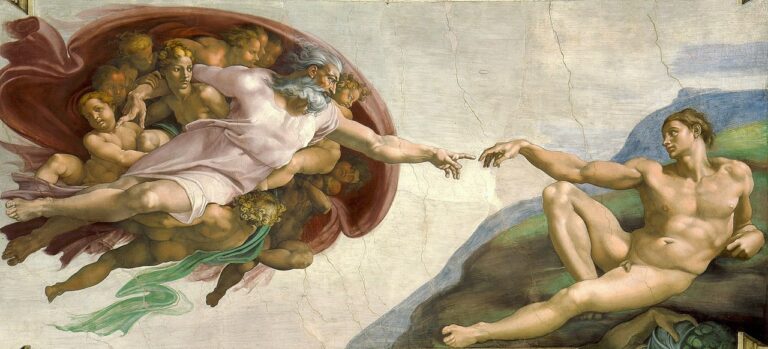Salvador Dalí Painter: The Surrealist Master Who Transformed Modern Art
Born: May 11, 1904, Figueres, Spain
Death: January 23, 1989, Figueres, Spain
Art Movement: Surrealism
Nationality: Spanish
Influenced By: Pablo Picasso and Joan Miró
Institution: San Fernando Royal Academy of Fine Arts and Municipal Drawing School, Spain
Salvador Dalí Painter: The Surrealist Master Who Transformed Modern Art
Early Life and Education of Salvador Dalí
Salvador Dalí’s journey to becoming one of the most influential surrealist artists began in his childhood in Spain. His education and early artistic development laid the foundation for his distinctive style and creative vision.
Birth and Childhood
Salvador Dalí was born on May 11, 1904, in Figueres, Spain, a small town near the French border in Catalonia. His father, Salvador Dalí i Cusí, worked as a notary and maintained strict discipline at home. His mother, Felipa Domenech Ferrés, encouraged young Salvador’s artistic interests.
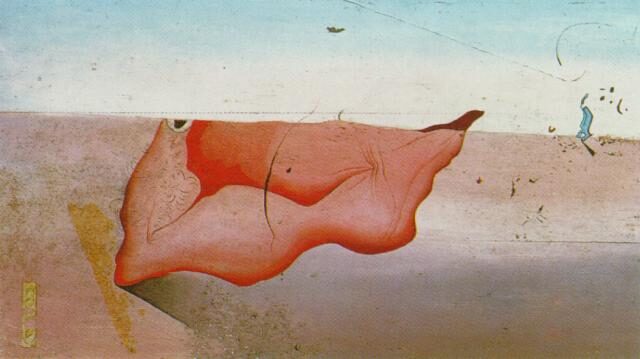
Composition, 1928 by Salvador Dalí
Dalí’s parents had told him he was the reincarnation of his older brother, also named Salvador, who had died nine months before his birth. This created a complex relationship with identity that would influence his later work.
The landscapes of Catalonia, with its unique rock formations at Cape Creus, made a lasting impression on young Dalí. These shapes would later appear in many of his paintings.
Formative Years in Art
Dalí displayed remarkable artistic talent from an early age. At 10, he received his first drawing lessons from local artist Ramón Pichot, a family friend.
By age 13, Dalí had his first public exhibition at the Municipal Theater in Figueres. His father arranged for a small room in their home to be his first studio, supporting his son’s artistic development despite having concerns about his career choice.
In 1916, Dalí discovered modern painting during a summer vacation in Cadaqués. This exposure to contemporary art opened his eyes to new possibilities. He experimented with different styles during this period, including impressionism and pointillism.
His earliest works show remarkable technical skill, with attention to detail that would become his hallmark later in life.
Influence of Impressionism and Cubism
Between 1918 and 1921, Dalí absorbed various artistic movements that shaped his developing style. He studied the works of impressionist masters like Claude Monet and became fascinated by their use of light and color.

The Enigma of William Tell, 1933 by Salvador Dalí
Cubism made a profound impact on Dalí’s early work. He studied Pablo Picasso’s revolutionary approach to form and space. The fragmented perspectives of cubism appealed to Dalí’s interest in perception and reality.
He also drew inspiration from Spanish masters like Diego Velázquez and Francisco Goya. Their technical precision and sometimes dark themes resonated with his sensibilities.
During this period, Dalí produced works that reflected these influences while developing his own distinctive approach. His paintings began showing the meticulous detail and precision that would later define his mature work.
Academia de San Fernando
In 1922, Dalí enrolled at the Royal Academy of Fine Arts of San Fernando in Madrid. This prestigious institution had trained many prominent Spanish artists. Despite his talent, Dalí’s time there was turbulent.
His eccentric behavior and flamboyant appearance—including long hair and unusual dress—made him stand out among his peers. He deliberately cultivated this image as part of his artistic identity.
At the academy, Dalí mastered traditional techniques while continuing to explore modern movements. His instructors noted his exceptional draftsmanship and technical abilities. However, he clashed with authority figures and was eventually expelled in 1926, just before his final exams.
During his time in Madrid, Dalí formed important friendships with future influential figures, including filmmaker Luis Buñuel and poet Federico García Lorca. These relationships would significantly impact his artistic development and later collaborations.
Key Works and Artistic Style
Salvador Dalí created remarkable artworks that showcase his unique vision and technical skill. His paintings combine dreamlike elements with precise execution, establishing him as a master of Surrealism.
The Persistence of Memory
“The Persistence of Memory” (1931) remains Dalí’s most recognized masterpiece. The painting features melting pocket watches draped over various objects in a barren landscape. These soft watches represent Dalí’s idea that time is not rigid but fluid.
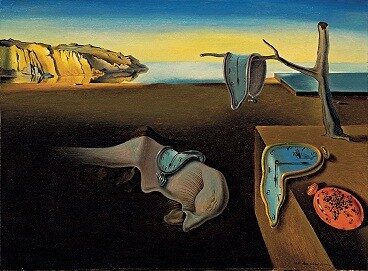
The Persistence of Memory, 1931 by Salvador Dalí
The small central figure with closed eyes suggests a sleeping face, reinforcing the dream-like quality of the work. The painting measures just 24 × 33 cm but has had an enormous impact on art and popular culture.
Dalí painted this work with meticulous attention to detail, using a technique he called “hand-painted dream photographs.” The soft watches have become an iconic symbol of Surrealism and Dalí’s artistic vision.
Galatea of the Spheres
“Galatea of the Spheres” (1952) shows Dalí’s wife Gala’s face broken into floating spheres. This painting marks Dalí’s interest in nuclear physics and atomic theory following the bombings of Hiroshima and Nagasaki.
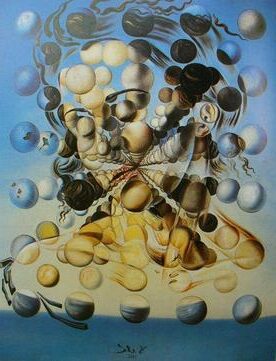
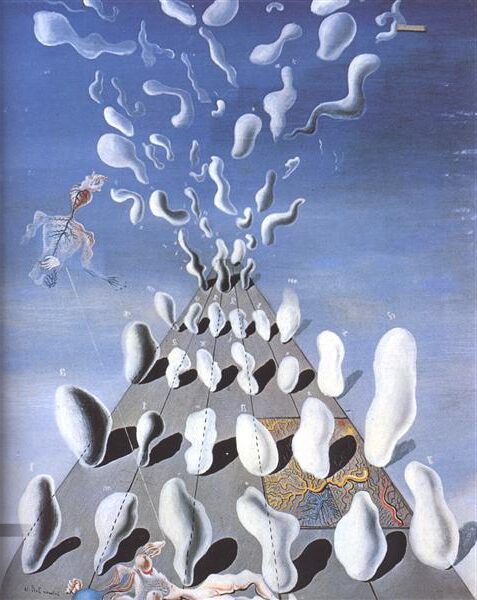
The spheres appear to float in space while still forming a recognizable portrait. Dalí achieved this effect through meticulous planning and painting.
The work demonstrates Dalí’s evolving style in the 1950s, where he combined traditional religious and classical themes with modern scientific concepts. The painting measures 65 × 54 cm and is housed in the Dalí Theatre-Museum in Figueres, Spain.
The Elephants
“The Elephants” (1948) features two elongated elephants with impossibly thin, stilt-like legs. These creatures stand in a stark landscape, carrying obelisks on their backs.
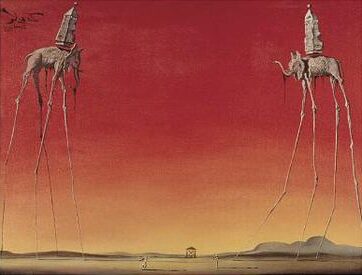
The Elephants, 1948 by Salvador Dalí
The elephants represent strength and power made fragile through their improbable legs. This contradiction was a recurring theme in Dalí’s work.
The painting blends elements from different cultures, with the elephant inspired by Bernini’s sculpture in Rome. The distorted proportions create a sense of weightlessness despite the massive bodies of the elephants.
Dalí revisited the elephant motif in several works throughout his career, making it one of his signature images alongside the melting watches.
Exploration of Surrealism
Dalí embraced Surrealism’s goal of accessing the unconscious mind. He developed his “paranoiac-critical method,” which involved inducing hallucination-like states to inspire his art.
This technique allowed him to create double images where objects could be seen in multiple ways. For example, in “Swans Reflecting Elephants” (1937), the reflections of swans transform into elephant heads.
Dalí’s surrealist works often included:
- Dream-like landscapes
- Objects transformed in unexpected ways
- Sexual symbolism
- References to his childhood memories
- Scientific and mathematical concepts
Unlike other surrealists who used automatic techniques, Dalí maintained technical precision while exploring irrational subjects.
Use of Optical Illusions
Dalí was fascinated by optical illusions and visual tricks. He often incorporated double images where one picture could be seen in multiple ways depending on the viewer’s perspective.
In “Slave Market with the Disappearing Bust of Voltaire” (1940), viewers can see either a group of figures in a market or the face of Voltaire. This technique requires careful composition and execution.
Dalí’s later works explored holography, stereoscopic art, and experiments with perception. He created images that played with depth and dimension, challenging viewers to see beyond the obvious.
His painting “Tuna Fishing” (1966-1967) uses optical techniques to create a chaotic yet precisely arranged scene that reveals different elements as the viewer continues looking at it.
Impact and Legacy
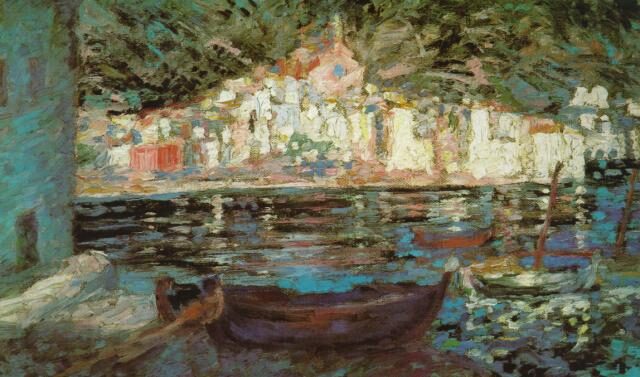
View of Cadaqués from Playa Poal, 1920 – Salvador Dalí
Salvador Dalí’s influence extends far beyond his paintings, shaping art movements and popular culture worldwide. His distinctive style and eccentric persona left an indelible mark that continues to fascinate audiences today.
Influence on Surrealism
Dalí transformed Surrealism with his “paranoiac-critical method,” a technique that allowed him to access his subconscious mind. This approach helped define the visual language of Surrealism in the 1930s and 1940s.
His melting clocks, dreamlike landscapes, and bizarre juxtapositions became iconic symbols of the movement. Artists like René Magritte and Max Ernst were influenced by his precise technique and psychological themes.
Beyond Surrealism, Dalí’s work influenced later art movements, including Pop Art and Conceptual Art. His explorations of symbolism and psychology provided a foundation for future artists to build upon.
Museum and Cultural Impact
The Dalí Theater-Museum in Figueres, Spain, designed by the artist himself, attracts over 1.5 million visitors annually. This building houses the largest collection of his works and stands as a surrealist artwork itself.
His home in Port Lligat, now a museum, offers insight into his private life and creative process. The Salvador Dalí Museum in St. Petersburg, Florida houses the largest collection of his work outside Europe.
Dalí’s impact extends to film, fashion, and advertising. He collaborated with filmmakers like Alfred Hitchcock and Walt Disney, and his distinctive mustache became a cultural icon of its own.
Enduring Popularity
Dalí’s artwork continues to command high prices at auctions. His painting “Portrait of Paul Éluard” sold for $22.4 million in 2011, demonstrating his lasting market value.
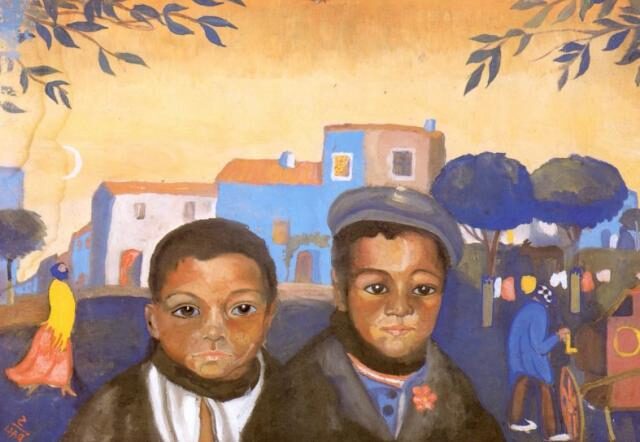
Two Gypsy Lads, 1920–1921 by Salvador Dalí
His striking imagery appears on merchandise worldwide, from posters to clothing. This commercial presence has helped introduce his work to new generations.
Social media has amplified Dalí’s appeal, with millions of posts featuring his artwork. Young people are particularly drawn to his dreamlike imagery and provocative themes.
How did historical events and personal experiences shape Salvador Dalí’s artistic evolution?
The Spanish Civil War and World War II profoundly affected Dalí’s work. His paintings during these conflicts often included references to violence and decay. This reflected the anxiety of the era.
His relationship with his wife and muse, Gala, transformed his art. After meeting her in 1929, she became a frequent subject and stabilizing force in his life and creative process.
Dalí’s exile in the United States from 1940-1948 exposed him to new audiences and commercial opportunities. This period saw him embrace celebrity status and develop a more diverse portfolio of creative projects.

